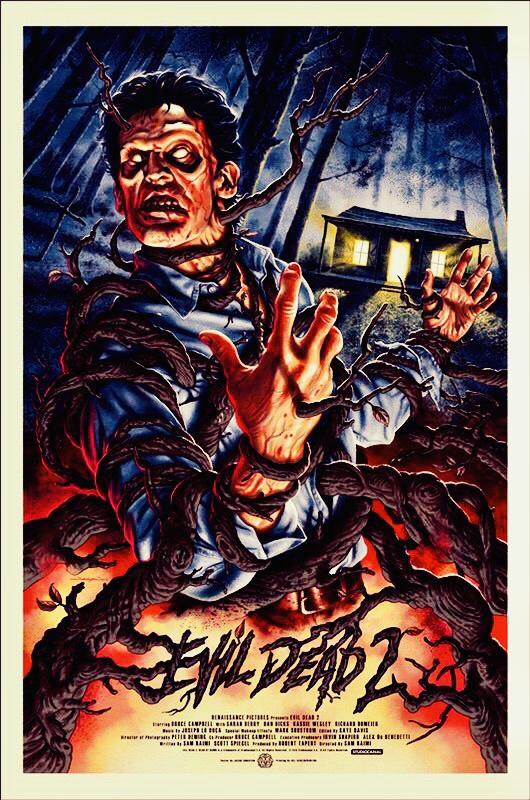
The third movie I’m reviewing is Sam Raimi’s “Evil Dead II.” This movie is unique in the fact that it is sort of a remake of the original. A majority of the cast is cut out, and this film just features Ash Williams and his love interest Linda. The original “Evil Dead” movie was made for less than a half a million dollars in a remote cabin in Tennessee. After the author of horror himself, Stephen King, poured heavy praise onto the film, worldwide distribution and a sequel followed.
Unlike the other big horror franchises with known directors and deep movie studio pockets that could churn out new films every year or every other year, Sam Raimi was a young, bright-eyed director with little experience (he was 22 when the original “Evil Dead” was released) but a loyal actor he had befriended years earlier stuck by his side.
Bruce Campbell, only one year Sam’s senior, made his career on low budget, cult classic films. Even when he hit it big with the “Evil Dead,” he still picked quirky roles like playing a geriatric Elvis Presley in “Bubba Ho-Tep.” He did still land big roles in movies like “Escape from L.A.,” “The Majestic,” and “Sky High” though.
Now afforded a $3.5 million budget, nothing was off the table. Stop motion, which had first been utilized two hundred and forty years prior, was utilized in a spectacular way in the film. That same year In 1987, the third installment in the Nightmare on Elm Street series had a stop motion skeleton sequence of Freddy, and although it looked more fluid than the scene in “Evil Dead II” with Linda’s reanimated corpse dancing around, the movements and choreography in Raimi’s film was miles ahead and more intricate than the overplayed fight scene that felt a little off with the stop motion taking place in front of a green screen of the actors reacting to Freddy’s movements. The choreography was so well done that one Tim Burton (who released his own stop motion short “Vincent” in 1982) recreated Linda’s motions with Jack Skellington six years later in “The Nightmare Before Christmas.”
The movie is similar in some ways to the original, but the tone is vastly different. A lot of the comedy that came inadvertently in the first film was now purposefully planted in the film to give it tongue-in-cheek charm. The prime example is the over the top acting and mannerisms of Bruce. His eyes look like moons as he widens them with an off kilter glance. His teeth shine as he lets out a maniacal laugh that is stretched out for an abnormally long time. No better example exists than when the camera pans to our hero Ash during a key moment in the film, and he responds with a nonchalant “groovy.”
The killing spree is comedically gory as the focus is less on the entities and more on Ash as spigots of blood slush around him, but the kills are definitely glorious. The camera work is also one of the most remembered things about the film. Like it’s predecessor, the audience is treated to first person shots from the entities’ perspective. This time around, the explosion of sounds that goes with the sporadic camera movements seems even more deafening and terrifying. It really does change the dynamic of what a horror film can be.
I don’t think this film is as good as the original, but the budget afforded Raimi and company the means to make the movie they wanted to. I would give this movie 8 possessed hands out of 10. The movie also sets up for a sequel as Ash manages to get sent back into time, but we can discuss that another day.
